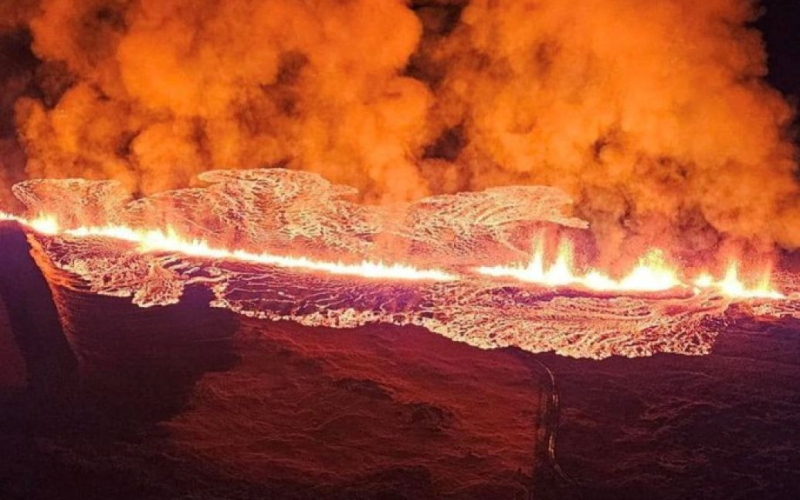In the photo from space you can see lava flowing from a two-kilometer crack.
In the NASA photo taken from space 30 March, you can see a huge area on the Icelandic Reykjanes Peninsula, over which lava spread from a volcanic eruption. And this area is constantly increasing.
Newsweek writes about this.
The two active craters of the volcano have erupted several times over the past few months. A series of eruptions began on December 18, 2023, and after that the volcano became active at least three more times: January 14, February 8 and March 16.
It is noted that the eruption, which began three weeks ago, is still ongoing. A crack about 2 kilometers long has formed in the ground, from which lava constantly flows, burning the earth around. Now its flows are already dangerously approaching the nearest city of Grindovik.
Iceland erupts
The last purple voyages on the Ilyanskaya Reykjan Peninsula were great in string four volcanic events starting in Dec. 2023. Landsat captured ongoing eruption with red infrared signal overlaid to show lava's heat. https://t.co/UN291hUy5C pic.twitter.com/dYYjCmE6rI— NASA Earth (@NASAEarth) April 4, 2024
“Experts from the National Land Survey of Iceland processed satellite data from March 27, showing that the area of the lava field was then 5.99 km2, and the volume of lava since the beginning of the eruption was 25.7 ± 1.9 million m3 “The average flow rate of lava from the craters was estimated at 7.8 ± 0.7 m3/s, which is very comparable to the flow rate during the first phase of the Heldingadalir eruption in 2021,” the Icelandic Meteorological Office said on Tuesday, April 2.
The eruption has now stabilized. Observers expect it to decline in the near future.
“The eruption in a number of Sundhnukurs craters continues, and two craters are now active. The third crater, which was much smaller than the other two, was extinguished at Easter. Volcanic tremors remain stable. No increase in leakage has been recorded at Svartsenga in recent days lava, indicating a decrease in the accumulation of magma in the magma reservoir under Svartsengi. Instead, the lava flows into the craters where it erupts,” the country's weather bureau added.
On the eve of the latest eruption, which began on March 16, authorities were forced to evacuate people from the nearby Blue Lagoon and the fishing town of Grindovik, which had already been damaged by previous eruptions.
Related topics:
More news

